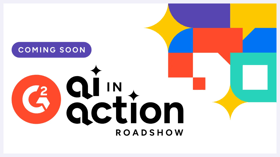June 25, 2025
 by Tanushree Verma / June 25, 2025
by Tanushree Verma / June 25, 2025

Imagine your latest LinkedIn post just hit 50,000 likes. The notifications are buzzing, and you're already drafting that success story for your next team meeting.
But those likes came from cat video enthusiasts, motivational quote collectors, and people who double-tap everything in their feed. Meanwhile, your competitor's "boring" post with 50 comments just generated three qualified leads from their actual prospects.
Welcome to the greatest illusion in B2B marketing: the belief that bigger numbers and viral content always mean better results.
I recently sat down with Devin Reed, Founder of “The Reeder” and a master of meaningful marketing. We discussed why chasing viral dreams might be sabotaging your real business goals and what you should be doing instead. He believes that your LinkedIn should be a thriving community where CFOs don't just consume content, but actively contribute to it.
To watch the full interview, check out the video below:
This interview is part of G2’s Q&A series. For more content like this, subscribe to G2 Tea, a newsletter with SaaS-y news and entertainment.
There's this obsession in B2B marketing with viral content and massive reach. What do you think is fundamentally wrong with this approach, and what are the real costs that companies don't see?
What's fundamentally broken with that approach is you're going for popularity instead of resonance with the people who are actually going to buy or influence purchasing decisions on your product. A lot of times, people say, "Hey, I want to go viral. I want as many people as possible to see the content," and that’s fundamentally flawed.
Great marketing isn't about getting as many people as possible to see your message — it's about getting as many people in your market to see it.
Devin Reed
Founder, The Reeder
If you're posting on LinkedIn, there are hundreds of millions of users. When you say you want as many people as possible to see your content, you're forgetting the main part: You want people who make or influence buying decisions to see your message.
This happens because social media is literally gamified to show you views and engagement metrics. There isn't enough analytics in LinkedIn or across the MarTech landscape to see who's actually engaging. Are these people on our target account list? Are these people we can actually sell to? Instead, we end up chasing popularity for popularity's sake.
It's easy to say, "This video got a million views, it must have been successful." And yes, it was successful in getting attention. But was that the real intent of that video or post? If your intent is to get people to choose you out of three different vendors, or to bring awareness to a category or new product, views aren't necessarily the best end game.
I know many people who get 2,000-3,000 views on posts and generate lots of leads, versus people who get 50,000 views and get zero.
When you see a LinkedIn post with 50,000 likes versus one with 50 meaningful comments, which would you bet your marketing budget on and why?
I would take the 50 comments, assuming they are from the right people — that inner circle we're trying to sell to.
Here’s why: 50,000 likes could be on a picture of a super cute puppy, and that's not going to help your business grow. Or it could be some platitude like, "Hang in there, you can do it," with an emotional story. That might make people feel good and get virality, but it's hard to build a reputation that way.
What I believe in is building trust at scale and building a reputation where people know, like, and trust us. Sharing pictures of puppies or surface-level emotional content that gets 50,000 likes probably won't help much.
But if you get 50 meaningful comments from CFOs and that's who you sell to, you get two benefits: First, you have 50 meaningful interactions. Second, LinkedIn will share that content with more CFOs and people in finance because those 50 people engaged with it. You'll get more impressions that matter and more credibility because other CFOs see your content with all this engagement from their peers.

Join industry leaders at G2's free AI in Action Roadshow for actionable insights and proven strategies to reimagine your funnel. Register now
What are some of the biggest mistakes you see companies making when they chase trends that don't align with their brand? What’s the long-term damage of this?
Most companies don't have a core LinkedIn strategy. Instead of making waves by creating their own content or amplifying their point of view, they look for too many different trends and try to ride that wave.
One week, their feed looks one way; the next week, it's completely different. Sometimes it's memes, sometimes graphics, but it always feels like they're trying to catch a trend and stay relevant. What this does is you end up not being very recognizable — you're not known for one thing.
Think of it like this: I'm wearing an Adidas track jacket today because I like Adidas track jackets. If I consistently wear Adidas track jackets in videos, my brand gets associated with that. But if I'm wearing whatever designer thing is trending each week, changing outfits to try to look relevant, your brand becomes "trying to look relevant" instead of being known for something specific.
It's better to pick one or two formats or styles, really hone those, get engagement, and be known for that. Then, you can test other things, rather than always testing without having one core approach.
What does "evergreen B2B content" actually look like on a fast-paced platform like LinkedIn? How do you create content that delivers consistent results months or even years later?
There's a time and place to be hyper-relevant to what's happening today. If there's a big acquisition in your industry, commenting on that is valuable, but it won't be evergreen — it's specific to that moment.
Evergreen content is something that's still relevant three, six, twelve months later, maybe even more. When I'm creating LinkedIn content, I try to balance both approaches. I actually lean toward currently relevant stuff when possible because those moments aren't always available. When there is something that has people's attention and is highly relevant, I want to jump on that. When there isn't something timely to comment on, I focus on problems, how-tos, and stories that I know will be relevant to my audience two years ago and two years from now — constants that don't change.
I ask myself, "Is this post going to be relevant in six months, or is this only relevant for six days?" If anything, it's safer to over-index on evergreen content, but you still want some trending content to build a reputation for being in the know.
Marketing leaders are under pressure to show return-on-investment (ROI) quickly. How do you prove the value of a sustainable content strategy to executives who want immediate results?
First, understand what ROI means to the individual you're talking to. Your CFO, CMO, and sales leader will all have different perspectives on what ROI or impact means. CMOs across different companies will also have different perspectives.
Second, show early and lagging indicators. At the executive level, ROI usually means company growth, specifically revenue, but not always. You need to understand the strategic initiative this program will support.
For demand gen campaigns, tracking inbound demos to closed deals is straightforward. But for brand-building activities and social media, you won't see linear results initially, and sometimes it's hard to see them at all.
I like to show different early and lagging indicators. Before we get inbound demos or people hitting "contact sales," we need early indicators like views, engagement, and follower growth on LinkedIn. Once we see that, we track how it impacts down-funnel metrics.
Next, don't be afraid to use qualitative feedback — screenshots of people in your ideal customer profile (ICP) engaging with content, email replies, or webinar comments. These are powerful signals because people often consume without engaging.
Lastly, show people you're not just focused on inbound demos or pipeline generation, but also on measuring resonance across marketing and building momentum. This helps make the case for continuing and scaling, and informs new programs by showing what's working.
You've built The Reeder from content into a community. What was the turning point where you realized you needed to shift from broadcasting to building with your audience?
I learned that people want to see the content behind the content — the process of getting there, what it looked like to get approval, the thought process for spending $100,000 on a program, or what an event was really like behind the scenes.
I had to have people tell me they wanted this kind of content because it feels uncomfortable sharing more vulnerable, behind-the-scenes stuff. It feels like, "Who cares?" But people do care.
People want diversity in their content and don't want to just be broadcast to. They have an eye for broadcast content — it's polished, manufactured, and ready for consumption. People pick up on that, and it smells like sales or marketing.
When people see more low-polished, behind-the-scenes, less scripted content, they gravitate toward it because it feels more real and honest.
Devin Reed
Founder, The Reeder
You're letting them into your life, and people like having "media friends" — they may not know you personally, but they feel like they know you through your content.
You can build much deeper relationships by building with people and sharing the behind-the-scenes than by polishing everything and making it market-friendly.
For a B2B marketer who's been focused on traditional demand gen tactics, what's the first step they should take toward building this content-to-community pipeline?
First, think about how to invite your audience to be part of your journey. You need to know what your mission is, and it can't be growing profit and revenue — people don't care about that much. They care about themselves.
You need a mission about who you're trying to help and why, and your content should reflect that.
Devin Reed
Founder, The Reeder
Next, invite them to build with you. I've seen a CFO client change her newsletter from broadcasting her thoughts to inviting other CFOs to share their insights. Now she's showing she's plugged into the community and building relationships with participants.
You can do simple things like sharing four book cover options and asking which one your audience likes, or asking whether to host your next event in Atlanta or Denver. I did this with my rebrand — asking which logo people liked best, even though I'd already picked one.
The more you get folks involved — submitting content, taking questions for future content, even if you're still broadcasting — the more you can go to market together. Listen to their voice and put their input into practice.
If you enjoyed this insightful conversation, subscribe to G2 Tea for the latest tech and marketing thought leadership.
Follow Devin Reed on LinkedIn to learn more about B2B content strategy and LinkedIn growth.
Edited by Supanna Das
Tanushree is an Editorial Content Specialist at G2, bringing over 3 years of experience in content writing and marketing to the team. Outside of work, she finds joy in reading fiction and indulging in a good rom-com or horror movie (only with friends). She is an enthusiastic dancer, a lover of cat reels, and likes to paint. A dedicated Swiftie, Tanushree also has a deep love for Hindi music.
Most B2B marketers think buyers are rational first and emotional later. They are wrong.
 by Sidharth Yadav
by Sidharth Yadav
Creativity is the new currency.
 by Kamaljeet Kalsi
by Kamaljeet Kalsi
Most B2B marketers think buyers are rational first and emotional later. They are wrong.
 by Sidharth Yadav
by Sidharth Yadav



